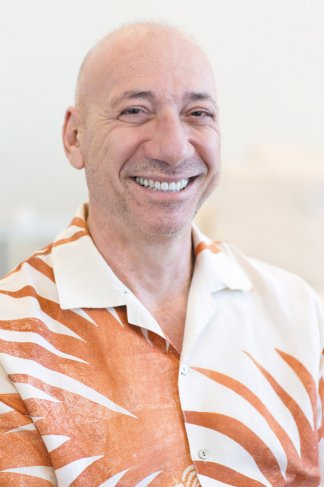Survey Addresses Health In Hawaii
Michael A. Gold
President and chief executive officer of HMSA
Where did you receive your schooling and training?
I’m originally from Chicago. After I graduated from high school in Kenosha, Wis., in 1965, I enlisted in the U.S. Air Force and was trained as a Vietnamese linguist. I served in Vietnam during the war. When I got out of the service in 1969, I ended up in Hawaii in 1970, originally coming here for a vacation. Like so many others, I fell in love with the Islands, and enrolled in the University of Hawaii at Manoa. I was at UH through 1974 and was a philosophy major.
How long have you been at HMSA, and what got you interested in the field of health care?
I joined HMSA right out of UH in 1974, and I’ve been here ever since. I’ve worked in many departments at HMSA over the years. I learned a lot about health care, health care policy and working with our members.
It built the foundation for my firmly held belief that HMSA needs to be on the forefront of making Hawaii a healthier place if we’re going to have a real impact on our members’ health. That’s why we’re reshaping HMSA to be a leader in transforming the health and well-being of all of Hawaii. We’ve got a number of major initiatives underway to do just that, ranging from paying physicians for patient outcomes rather than services provided, to the Blue Zones Project, which is about making many small, relatively easy-to-implement changes to drive major improvements in the health and well-being of entire communities.
What is HMSA’s Healthways Well-Being Assessment?
The Healthways Well-Being Assessment, or WBA, is a key part of our mission to advance the health of Hawaii. We’re working on it in partnership with Healthways, which developed the WBA to help individuals and organizations drive positive changes in well-being. The assessment is an online survey that does two things. First, it gives participants a secure way to get a detailed look at their level of health and well-being, and actually gives them a plan and coaching to become healthier. It also gives us aggregate data ― we use combined results, not individual responses ― that helps HMSA and the community understand where we are as a community in terms of health and well-being. There’s no other survey or assessment tool like the WBA. It’s free and available to all Hawaii residents, not just HMSA members. You can take the WBA at hmsa.com/wbc.
What health aspects does the survey address?
It’s a comprehensive survey. There are a few basic questions: Height, weight, your latest cholesterol and blood pressure reading. You don’t have to fill those in, but if you have the information, it presents a clearer picture of your well-being and gives you better feedback on how you can improve. Then there are other questions, including your perceptions of your emotional and physical health, how happy you are with your life, your workplace and whether you have concerns about basic life issues, such as housing, personal safety, finances, food and satisfaction with where you live. The WBA consolidates your answers, which gives you a detailed snapshot of your well-being today and what areas to work on.
The really good thing about the assessment is that it combines all results so that we can understand how we’re doing as a state, and how we compare to national results. About 30,000 Hawaii residents already have taken the survey.
HMSA launched this current assessment early in the summer. We’d like to have as many people in Hawaii participate in the WBA as possible by the end of the year.
What will you do with the results?
The results can help drive change at two levels. Individuals who take the WBA will get a detailed look at how they perceive their health, wellness and happiness. It’s a very helpful report. All of the individual results are aggregated into a statewide report, without identifying individual data. That report is really useful for us to understand what public policies we might strengthen or develop to make major improvements in our health and well-being. It gives us data to help drive our wellness initiatives, such as the recently launched Blue Zones Project, which is about communities driving healthy changes. We’ll need the WBA data and other information to measure how well we do.
What preliminary work has been done and what is the data telling us about the state of health and well-being in Hawaii?
We’ve got some interesting preliminary data based on the Hawaii residents who’ve taken the WBA this year. Compared to the national average, we’re not quite as healthy. We have higher cholesterol levels, higher incidence of diabetes and higher levels of people reporting asthma, for example. We’re doing better when it comes to reported incidents of depression as well as heart attacks. And we’re doing much better than national averages for access to dental care, participants reporting having a personal physician, having health insurance and ease of getting prescription medications. That’s encouraging. The data suggests we’re doing OK on access to care, but we need to look at ways to improve the overall health of our communities.
Hawaii used to rank No. 1 in the nation on Gallup-Healthways Well-Being Index, a separate measure of well-being. But we’ve been slipping. We’re now in eighth place, and that concerns me. The WBA helps each of us make the changes we need so that we can, as a community, regain the top spot on the Gallup-Healthways survey.
Anything else you’d like to mention?
If nothing else, take the Well-Being Assessment to better understand your current health and wellness. Do it for yourself! It will give you a detailed starting point to make important decisions, for yourself and your family, about how to start down the path to a healthier life.






